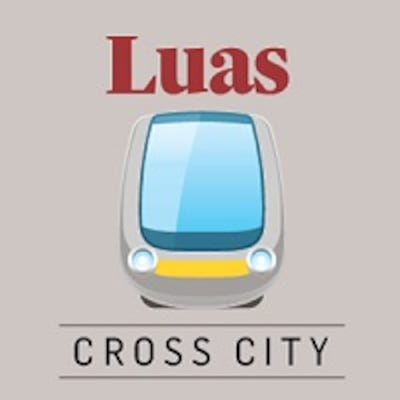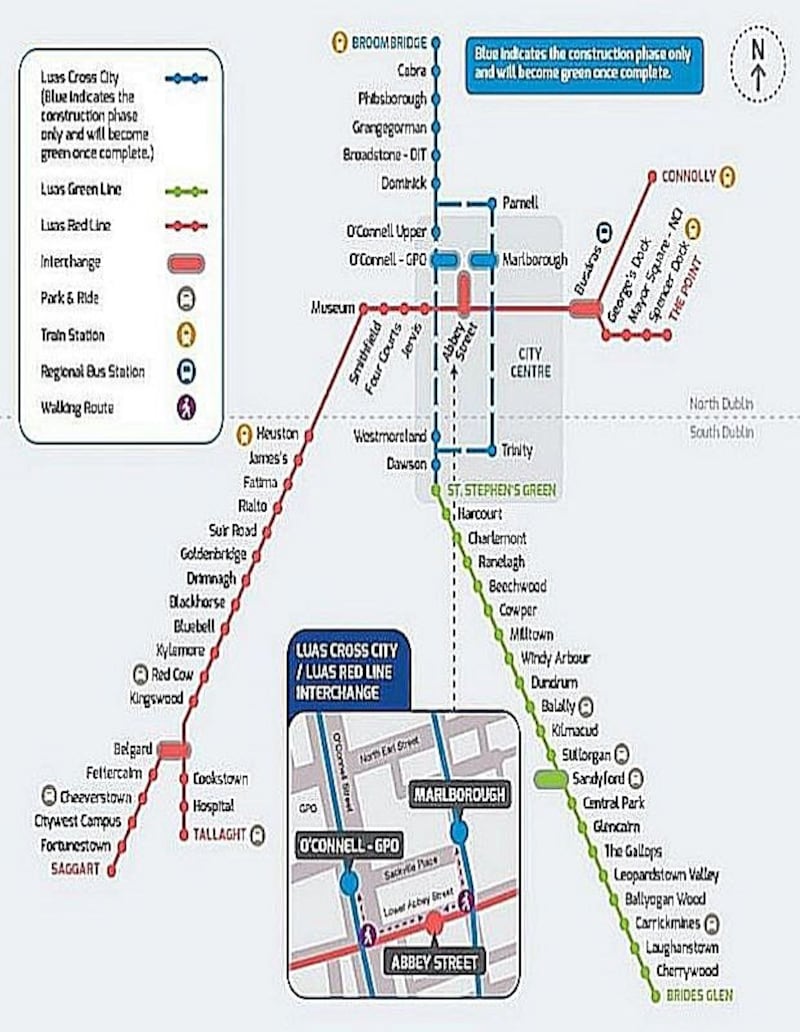When the first silver Luas trams begin trundling through Cabra and Phibsborough this week, homeowners and auctioneers will be waiting to see what happens to real estate prices.

"We think we will get a bigger jump [in values] when the tram is actually moving with St Stephen's Green written on it," explains DNG auctioneer Vinnie Mullen of a phenomenon that seeks visual proof of infrastructure before value translates to bricks and mortar.
“It’s like the old Irish mentality: will this actually go ahead?”
The Luas Cross City is finally going ahead, but even back before contractors began bending steel and digging concrete channels, there was movement in the housing market. Investors hovered. Owners watched the value of their homes rise.
The oft-called “Luas effect” is not new; marked appreciation has been evident in many of the properties that skirt the existing green line which came into operation almost 15 years ago. The promise of fast, regular and economical public transport is an obvious boon to would-be buyers.
Like Stoneybatter before them, Cabra and Phibsborough are now on the eve of anticipated gentrification, ushered in by a swelling population of young professionals connected to the city by the new tramline.
"The type of first-time buyer that was buying in Stoneybatter in the Celtic Tiger is probably buying in Cabra now," says Mullen.
“Cabra is becoming very trendy with the Luas and everything that is going on. They [homes] are also a bit bigger than Stoneybatter.”
Meanwhile those with young children, who bought in Stoneybatter, are expected to upgrade to the larger period homes in Phibsborough where a popular Educate Together school nearby should prove appealing, he says.
"I think you will have a lot more buyers who would not have looked at Cabra or Phibsborough before who will look at it now. A lot of staff from the IFSC who were buying in Fairview and North Strand can now hop on the Luas and go down the quays."
Not evident
While the price rise is seen as a fait accompli, Mullen says it may not become evident until early next year, following the traditional cooling off period for the property market over Christmas.
However, by that stage, pent up demand and comparatively low availability, coupled with the arrival of the Luas, could create a perfect storm for price inflation.
A classic Phibsborough property is a three-bed red brick house. The price of these shrank significantly at the bottom of the recessionary market in 2012 to about €180,000 but had recovered to a figure in the region of €450,000 this year. With a further 10 per cent increase expected thanks to the Luas, Mullen believes such houses could start fetching half a million.
In the popular Shandon area neighbourhood too, family homes that attracted selling prices of €350,000 two years ago are expected to hit the same mark.
The Luas won't be alone in gentrifying the area. Mullen points to forthcoming investment in the local shopping centre and adjacent Dalymount Park football ground.

There has been investor activity in the last few months too, he says, particularly around pre-1963 properties on the North Circular Road, divided into five or six flats.
Research published today shows the potential potency of the Luas for property values. MyHome.ie, analysing the property price register for sales and asking prices on its own website, has noticed increases around the new Cross City line. It found property valuations in some parts of Dublin had risen by as much as 25 per cent along the line in the first nine months of the year, compared to almost 12 per cent elsewhere in the city. Also, anyone with property in these areas need only look to the Luas green line, stretching from St Stephen's Green to Sandyford and threading numerous south side suburbs.
A study released by Daft.ie in mid-2016, and which analysed more than a million listings in a 10-year period, identified a premium in prices for owner-occupied and rental properties close to the line (there was no increase to house prices on the red line, running to Tallaght).
"When the Luas is there on the ground, when people can get off it and arrive in the area, I think there will be a 10 per cent bump," says Paul Lappin, director of Lappin Estates in Phibsborough.
The Cabra and Broombridge areas, he says, are typically two- and three-bed former council homes, mainly occupied again by young professionals. When the Luas arrives, it will take just 21 minutes to get from the end of the line to the city centre.
There was a bump in prices after the 2013 route announcement and then, about two years ago, when the project received increasing media attention, prices quickly swelled again.
Homes valued at between €160,000 and €180,000 quickly began to sell for between €220,000 and €240,000.
"If you were at the back end of Cabra (around the Ventry area) you would have been a bit isolated but now you won't be," he says.
"It will price some people out. The more popular Cabra becomes the more people will have to move up into parts of Finglas, Whitehall and Glasnevin. "
Cabra is now expected to find itself a more fashionable area in the manner of Stoneybatter and businesses are likely to follow closely behind its rising prices. In the years to come, the Luas Cross City may be seen to have delivered much more to this part of Dublin than just its commuters.










